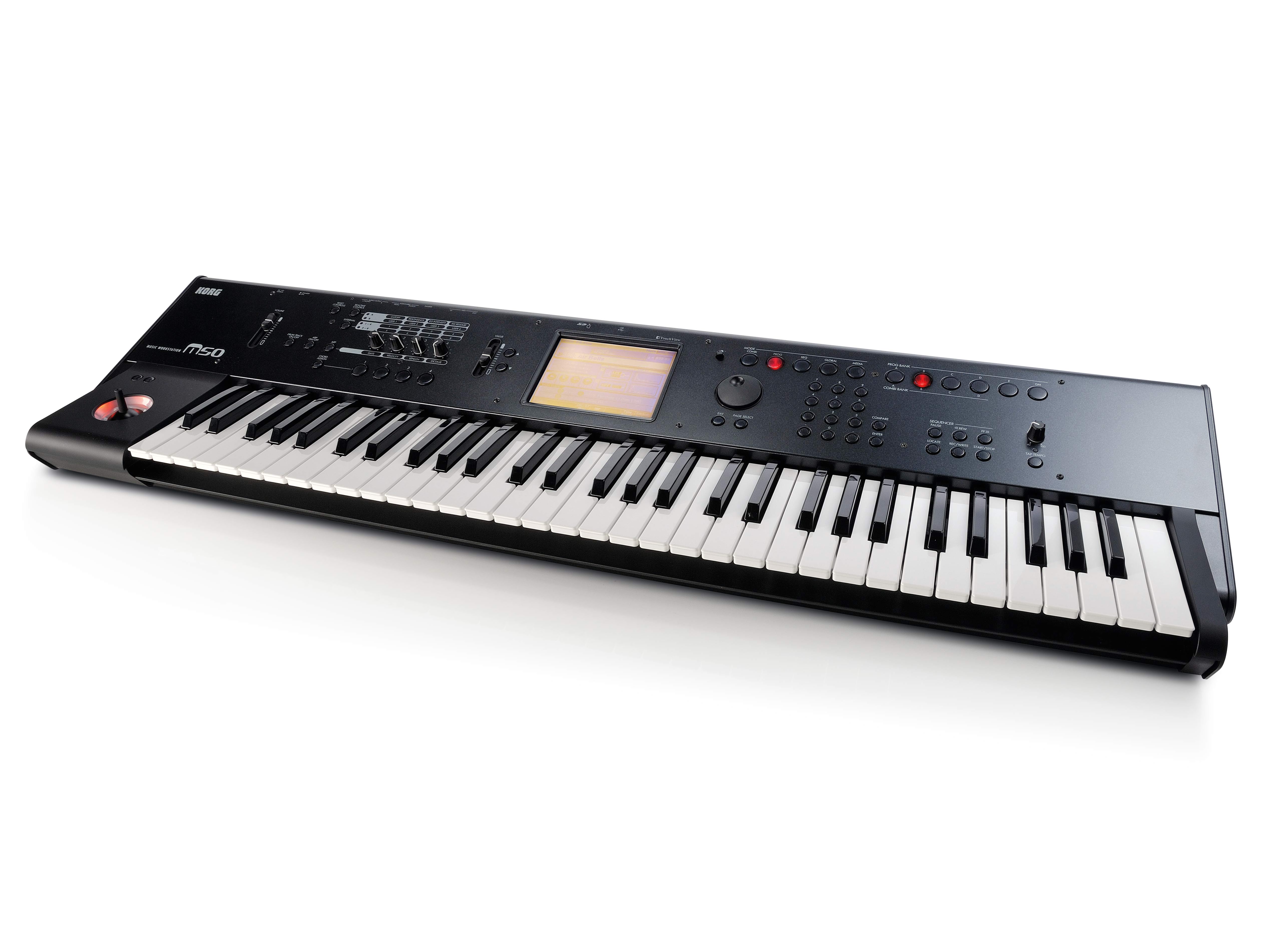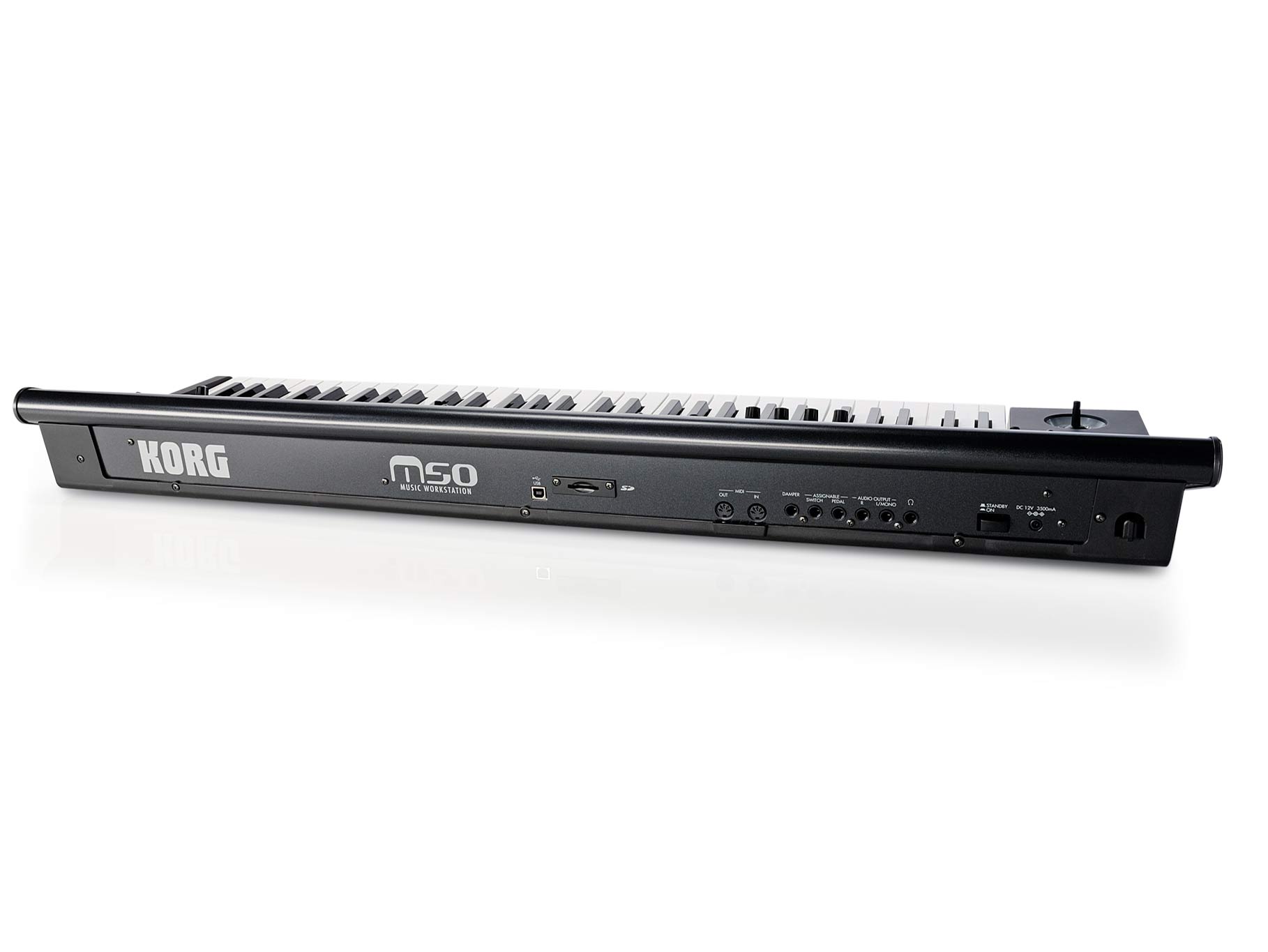MusicRadar Verdict
A bargain. Easily the most highly spec'd sub-grand keyboard you can buy. Portable and powerful.
Pros
- +
Well thought-out DAW connectivity. Top notch sounds. Touchscreen is a real bonus at this price.
Cons
- -
No Karma capabilities. No bank of sliders.
MusicRadar's got your back

Korg M50

Korg M50
For ease of imagination, think of the M50 as a strimmed back M3. The superfluous features have been cut away to leave 256MB of PCMs, 608 patches and 384 combinations covering all the bases.
Special mention must go to an accent on great synth sounds (alongside the slightly more mundane impersonations) and a full recreation of the classic Korg SG-1 sampling grand piano. And, for when you get creative, there's a superbly ample 640 program slots and 512 combo slots to store your patches and stacks.
The synth engine on board is Korg's EDS (Extended Definition Synthesis). This is borrowed from the M3 and it's impossible to tell if you're listening to an M3 or an M50 when you rack up both side by side.
The sound is powerful and definitely synthetic, although a GM soundset is onboard, too. For synth strings, leads and basses the M50 excels - all are rich with plenty of movement, with the rest of the soundset serving up a wide gamut of, above all, useable textures.
It's a real welcome change after tapping through endless banks of atmospheres and zap-pow 'show-offs' on other synths.
Physical specs
Build-wise, the M50 is amazingly light. Take possession and you'd be forgiven for thinking that they'd forgotten to put one in the box.
While bigger brother the M3 has metal parts visible and even a glimmer of wood at its ends, the '50 isn't so blessed. That said, the plastic used throughout has a nice matt patina (think black MacBook and you're bang on) and the casing is impossible to flex.
And we love the unusual half-open hinge design. With the keyboard flat, the controls tilt upwards at 45 degrees meaning that that touchscreen is at the perfect angle for viewing and prodding.
While the screen is the same size as that of the M3 there's less to press on the M50 due to the reduced number of features on board. While the M3 was guilty of crowding the screen with difficult to locate buttons, the M50 is less packed (though a little more 'basic' feeling as a result).
What's missing?
The M50 loses the M3's pads, which were, if we're honest, a bit of a luxury and aren't missed. What we do miss, however, is the M3's bank of sliders, used for tweaking parameters and mixing.
Instead, the M50 has four multi-function knobs off to the left, alongside buttons that determine their meaning.
Also missing from the M3 is that synth's Karma capabilities. A staple of high-end Korg keyboards, the Karma feature serves up multi-instrument backing to whatever keys you randomly jab down.
It's a great tool if you're stuck for inspiration and can make anyone sound great - it mathematically jams and adlibs around your ham-fistedness - but if you know what you want to play Karma is a novelty you will probably never use.
Strengths
What the M50 does have, however, is thousands of those great sounds and enough power to put 16 of them out simultaneously. As a partner keyboard to a DAW it's ideal - hook it up to your computer over USB and you can actually call it up as if it were a plug-in - and the large screen and quick dial (backed up by a really idiot-proof system of banks and buttons) mean that once you've installed the included plug-in software, it's easier to dial up and use the M50 than it is to trawl through your burgeoning plug-in collection.
During our test we found that we were using the M50 more and more as an instant source of great, quickly-tweakable sounds.
The built-in arpeggiator includes a bewildering number of up, down, random and alternative variations and, when combined with the drum track option which plays a suitable kit and pattern for each sound, you can get a Karma-style 'tune-from-one-finger' up in no time.
Of course, recording your songs is possible on the M50, and Korg has done its best with the sequencer, but purely due to the size and res of the screen, we'll always reach for our DAW in preference. Still, if you're on the move, it's easy to use and it works.
Summary
All in all then, it's a great package. First and foremost, it's an easy to use source of some incredible sounds, secondly it's affordable and light. And it's great to see a keyboard that truly embraces your DAW.
Get an M50 and see how hardware and software are supposed to be integrated.
Future Music is the number one magazine for today's producers. Packed with technique and technology we'll help you make great new music. All-access artist interviews, in-depth gear reviews, essential production tutorials and much more. Every marvellous monthly edition features reliable reviews of the latest and greatest hardware and software technology and techniques, unparalleled advice, in-depth interviews, sensational free samples and so much more to improve the experience and outcome of your music-making.
“KIKI BOY 2025”: Frank Ocean appears to be teasing something... or other
“This is great. I knew I was getting to them! I’m so happy. It’s such a good feeling”: Spotify bites back at Kate Nash
“The included sample content is not only unique but sonically amazing, as it always was”: Spitfire Audio BBC Radiophonic Workshop review










